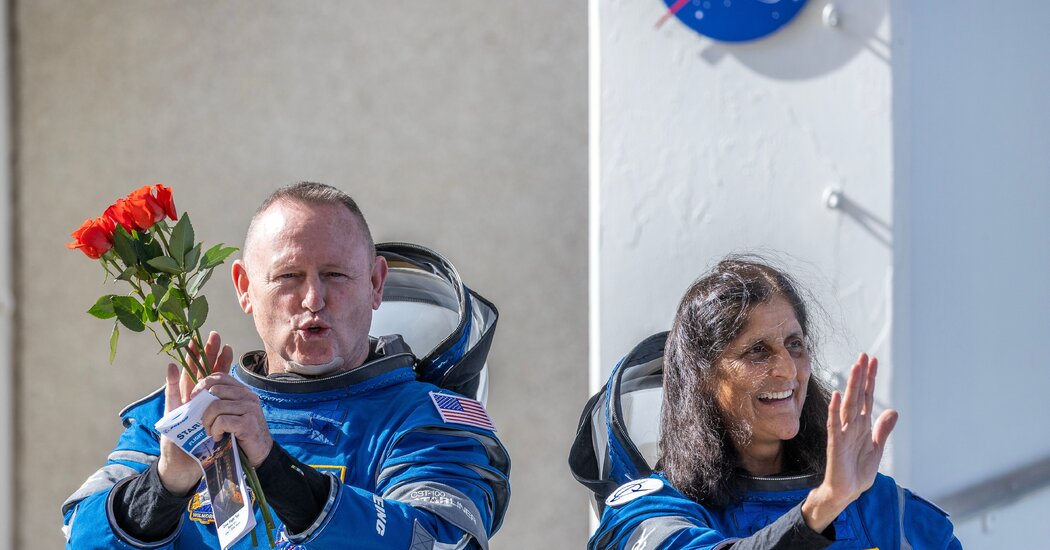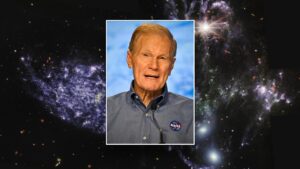At the end of 2019, Boeing appeared to have a good chance of beating SpaceX and becoming the first private American company to put astronauts into orbit.
In the four and a half years since then, a lot has gone wrong. Here’s a timeline of the failures that have caused Boeing to fall so far behind SpaceX in providing transportation for American astronauts to low Earth orbit.
December 2019: “High Visibility Close Call.”
On December 20, 2019, it looked like Boeing was on the finish line.
A Starliner capsule — the same spacecraft set to take NASA astronauts Butch Wilmore and Sonny Williams to the space station on Saturday — was on the launch pad atop an Atlas V rocket.
The test flight to the space station had no astronauts on board and its mission was to evaluate the spacecraft’s navigation, propulsion and docking systems. If the flight clears this final technical hurdle, a trip with astronauts on board could happen within months.
The Atlas V rocket launched flawlessly, releasing the Starliner.
And then the mission immediately failed.
The spacecraft’s clock was set to the wrong time, causing the Starliner to think it was in the wrong place. The capsule fired its thrusters to try and get to where it thought it needed to be. At the same time, a communications problem thwarted efforts by flight controllers in mission control to diagnose and fix the problem.
The Starliner spacecraft used up too much fuel and the planned docking with the space station was cancelled.
During troubleshooting, Boeing engineers discovered another software bug that would have fired the wrong engines during a re-entry maneuver. NASA called the incident a “high-visibility close call” that could have destroyed the spacecraft if the errors weren’t corrected from the ground during the flight.
An investigation revealed multiple errors in Boeing’s processes that should have caught the errors before launch. A comprehensive audit reviewed one million lines of software code.
NASA officials acknowledged that they may have placed too much trust in Boeing, which has decades of experience working with NASA.
Summer 2021: Launch pad corrosion.
NASA and the company decided that a second uncrewed test was needed before a flight with astronauts on board. The spacecraft was launched to the launch pad in July, but a problem aboard the space station led to a delay until early August. Then, before the Aug. 4 launch attempt, mission managers discovered corroded fuel valves on the Starliner that wouldn’t open. The test flight was canceled and another long round of troubleshooting ensued.
May 2022: Another launch, more problems.
The second uncrewed test finally launched on May 19, 2022.
During a maneuver to put the Starliner into a stable orbit, two thrusters failed, but the spacecraft was able to compensate. He proceeded to board the space station and successfully returned to Earth.
July 2023: Parachutes and tape.
Before the test flight with astronauts on board, then planned for July 2023, two more problems arose. The protective tape that was wrapped around the cable insulation proved flammable, and a key component in the parachute system was weaker than designed and could break if the Starliner’s three parachutes did not deploy properly.
About a mile of webbing was replaced, and the parachute design was improved and strengthened, then retested.
May 2024: Not yet ready for flight.
“We’ve taken our time to go through everything methodically because this is a test flight and we want it to go well,” said Steve Stich, program manager for NASA’s Commercial Crew Program, during a May 3 press conference.
Mark Nappi, Boeing’s program manager for the Starliner, said: “We are ready to do the test flight. And I’ve never felt more prepared for any mission I’ve ever been on.
But the Starliner wasn’t quite ready yet.
The May 6 countdown was proceeding smoothly until a malfunctioning valve on the Atlas V rocket’s second stage — unrelated to the Starliner — sprang into action, vibrating audibly about 40 times per second.
The launch was aborted and the rocket had to be removed from the launch pad to replace the valve. This work was completed within a few days.
But a thornier problem arose.
As fuel was drained from the Atlas V rocket’s tanks, engineers discovered a small helium leak in the Starliner’s propulsion system.
Helium, an inert gas, is used to push propellants to the thrusters, and if too much helium is lost, the thrusters may not function properly.
The leak was traced to a seal on a helium line leading to one of 28 small thrusters known as reaction control system engines.
“Like any piece of plumbing at home, a faucet or something like that,” Mr. Stich said during a telephone press conference on May 24. “There’s a seal that keeps that interface tight.”
Tests showed no leaks in the seals leading to the remaining 27 engines of the reaction control systems, and engineers were confident that the single leak could be managed. There are no plans to replace the seal, which would require the Starliner to be removed from the Atlas V rocket and cause even longer flight delays.
“We could handle this particular leak if that leak rate went up to even 100 times,” Mr Stich said.
The helium leak prompted NASA and Boeing to take a broader look at the Starliner’s propulsion system, which revealed a “design vulnerability,” Mr. Stich said. If a series of unlikely failures occurs, the spacecraft may not be able to return the astronauts safely back to Earth.
If there were problems with the larger engines intended to be fired for the maneuver to take the spacecraft out of orbit, one of the backup plans was to use eight of the smaller thrusters. However, the analysis showed that an additional failure could mean there would be only four of the smaller thrusters.
Engineers then developed another backup plan to get the Starliner out of orbit with just the four thrusters. NASA and Boeing officials said that after weeks of studying the problem, they are confident they can deal with the problems that may arise from the leak.
And on Saturday, finally, perhaps, Mr. Wilmore and Ms. Williams will fly on the Starliner.



